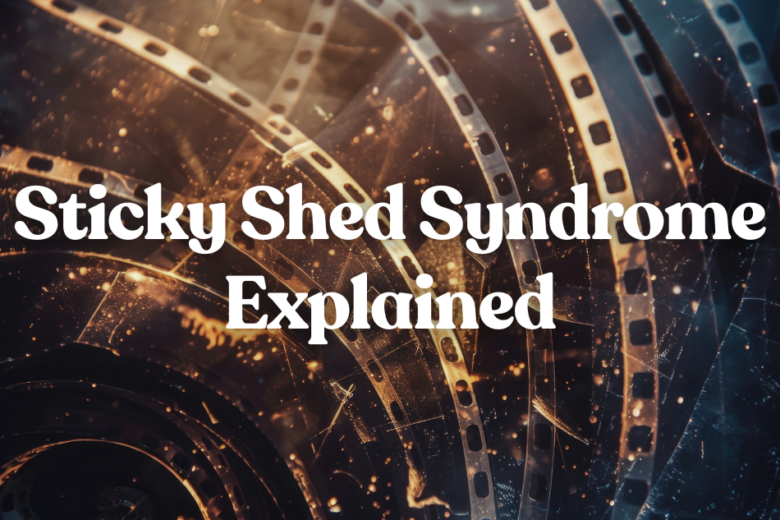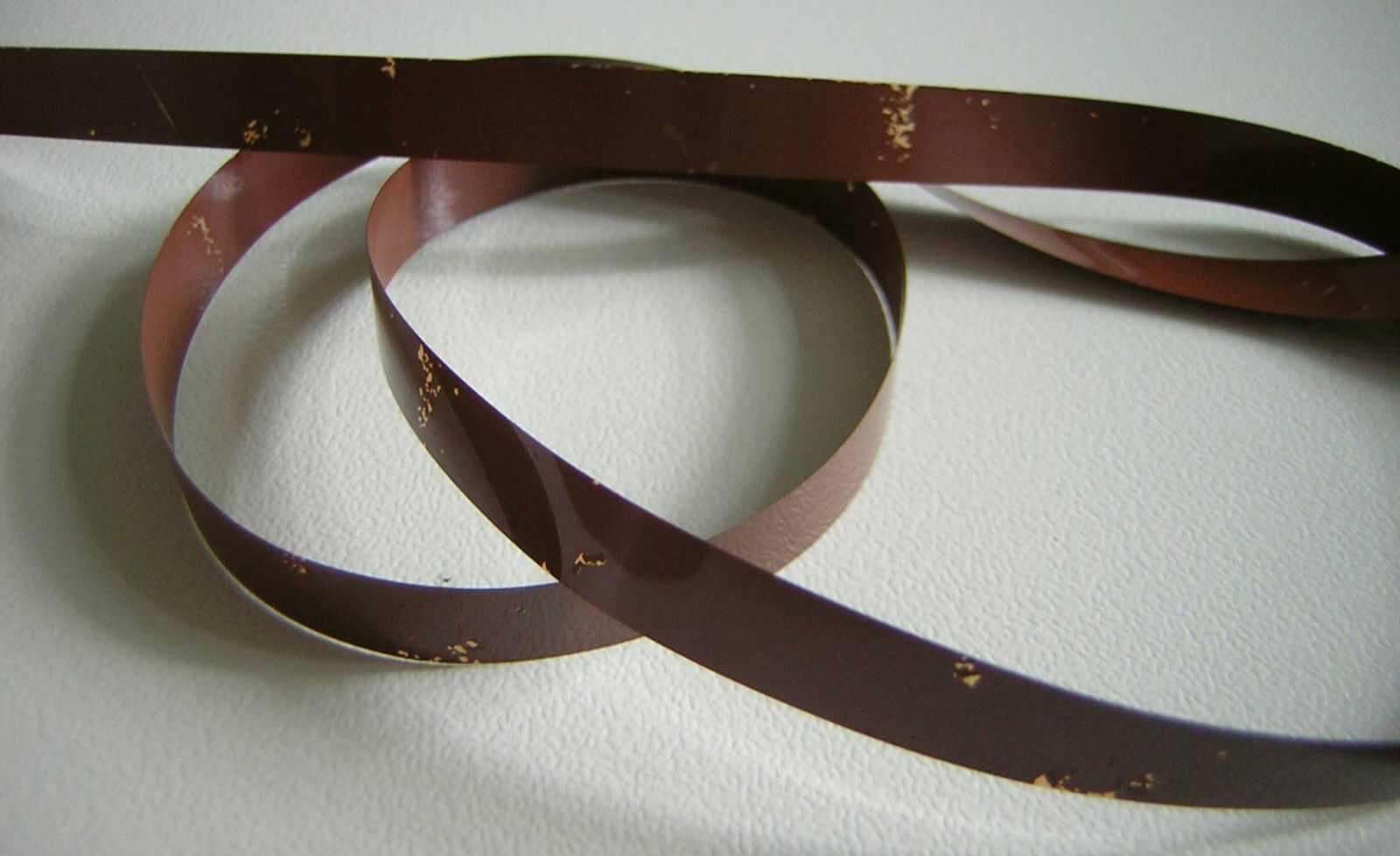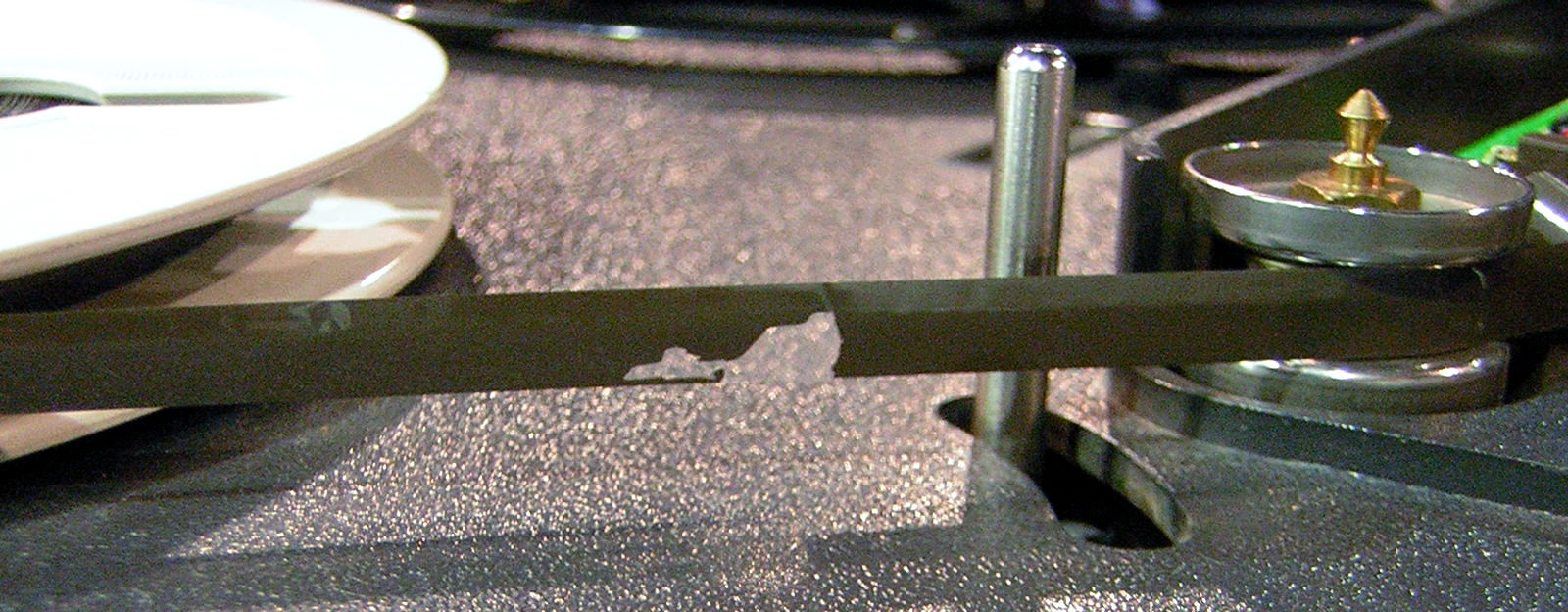Video tapes can become damaged for a variety of reasons (we’re talking mold, humidity, discoloration, etc) but one problem that affects aging tapes most is sticky shed syndrome.
As the name suggests, this condition causes a sticky substance to appear inside the tape, making playback completely impossible. Let’s explore what sticky syndrome is, what causes it, what tapes are affected by it, and what you can do to keep your tapes safe.
WHAT IS STICKY SHED SYNDROME?
Sticky shed syndrome is a type of deterioration that affects video tapes.
But to understand what it is, you first need to know how a tape is constructed. You see, it’s made from a plastic film that has various added layers, including a magnetic oxide coating and a back coating to add protection and reduce friction during playback. These coatings are applied using a binding agent.
When this binding agent deteriorates, it causes a sticky substance to cover the tape, pinch rollers, and playback heads. Now that the binding agent has stopped holding the different layers of tape together, they start separating in some places and fusing together in others.
WHAT CAUSES STICKY SHED SYNDROME?
Moisture in the atmosphere is the main cause of sticky shed syndrome. Certain tapes, especially those produced in the 1970s, used a binding agent that contained polyurethane — a substance that absorbs moisture.
Over time, the binder in these tapes absorbed more and more moisture until the polyurethane element rose to the surface of the tape and caused the signature stickiness.
This type of binding agent became less common eventually, so newer tapes are much less likely to suffer from sticky shed syndrome — though moisture is still dangerous to all tape. It’s always recommended to store your tapes in low-humidity environments.
WHY IS STICKY SYNDROME BAD?
When polyurethane rises to the surface of the tape and spreads inside the cassette, the first warning sign is a squeaking sound during playback. This is a key symptom of sticky shed syndrome, and if you hear it, you should stop using the tape immediately.
Continuing playback risks severe damage: sections of the tape stuck together by the sticky residue might tear apart or the magnetic coating could peel off the plastic film entirely. This could cause permanent damage and prevent you from safely transferring your footage to another format.
WHICH TAPES ARE MOST AFFECTED?
Sticky shed syndrome caused by polyurethane affects tapes made by Ampex/Quantegy, Scotch/3M, and, reportedly, Sony. It mainly affects older tapes from the 1970s and possibly the 1980s. Here’s a sticky shed syndrome tape list:
Scotch/3M
- 206
- 207
- 226
- 227
- 262
- 808
- 966
- 967
- 986
- 996
Sony-branded tapes
- PR-150
- SLH
- ULH
- FeCr
Ampex/Quantegy
- 406
- 407
- 456
- 457
- 499
The condition we call sticky shed syndrome refers specifically to tapes using the old polyurethane binder. However, similar problems occur with other tape types. The reality is, no video tape was made to last forever because the tape and its magnetic coating are delicate.
Moisture can damage all tapes and different binding agents can deteriorate in different ways. Some become powdery, some gooey, and some — like polyurethane — sticky.
No matter what specific condition affects your tape, it’s best to stop using it as soon as you notice any signs of deterioration.
IS STICKY SHED SYNDROME PREVENTABLE?
When it comes to sticky shed syndrome on polyurethane tape, the only thing you can do is store your tapes in a low-humidity area and do your best not to let any moisture get near them. This won’t protect them forever, though, simply because some amount of moisture will always be present in the atmosphere and the binding agent will slowly slurp it up over time.
HOW TO TREAT STICKY SHED SYNDROME
To have the best chance at treating your tapes if and when they get sticky tape syndrome, always be on the lookout for signs.
As mentioned, the most obvious sound is the unpleasant squeaking or squelching you’ll hear when you try to play the tape. As soon as you hear this, take the tape out of the VCR and stop using it. This will ensure you don’t rip the tape apart and lose your footage.
Practically speaking, sticky shed syndrome marks the end of a tape’s life. When it happens, you need to focus on getting the tape in a good enough condition to use it one last time and transfer its footage onto a new format.
To do this, you need to get rid of the moisture that’s causing the problem. The most common tactic is to bake your tape in the oven at a low temperature for multiple hours. However, this is a tricky process and we wouldn’t recommend trying it at home. Instead, seek the help of tape restoration and digitization experts.
DIGITIZE YOUR OLD TAPES WITH EVERPRESENT
If your tapes are displaying signs of sticky shed syndrome, we can take care of them at EverPresent. We have special equipment to repair and clean broken tapes and then we digitize the footage for you to keep forever.
Sticky shed syndrome can make tapes unusable, so there’s no guarantee that we will be able to save your footage but we can promise that we will do the best we can. During our time as a digitizing company, we have helped people preserve more than 50 million memories, and we want to add yours to that list too.
Get in touch today to inquire about a project.




